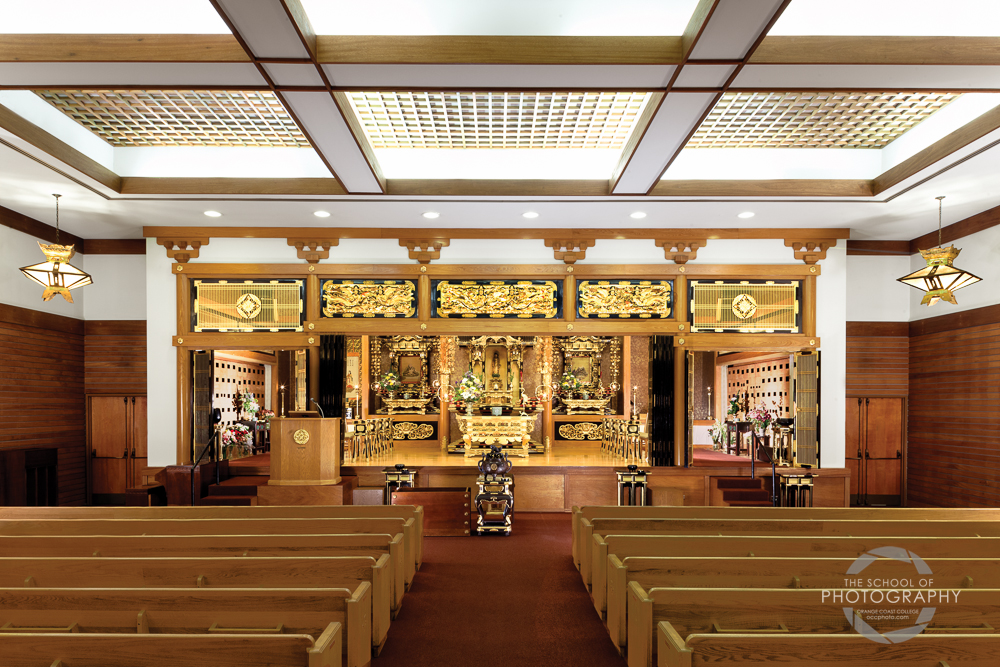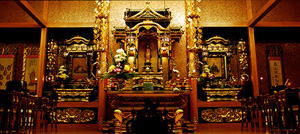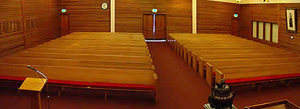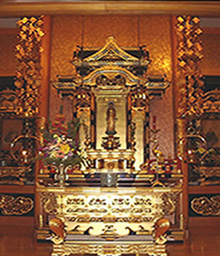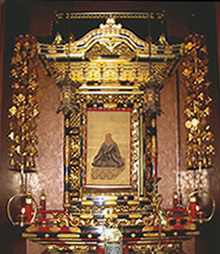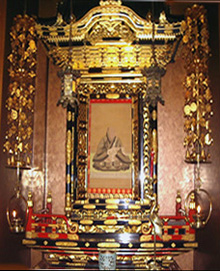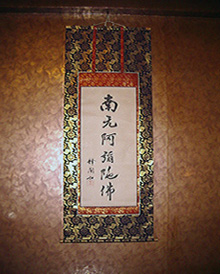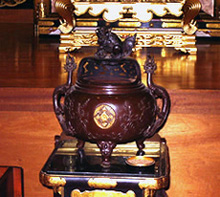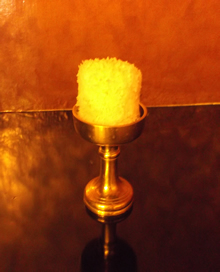Welcome to the Higashi Honganji Buddhist Temple. Our temple offers a spiritual environment that cultivates individual exploration based on the Buddhadharma. Through self-reflection, we are encouraged to strive for harmony with respect for the differences in our diverse community.
Higashi Honganji Buddhist Temple
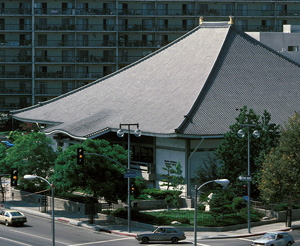 Throughout the 2,500 years of its history, Buddhism has evolved over the years to meet the spiritual needs of the people. Our Higashi Honganji Buddhist Temple is an affiliate of one of the oldest and largest denominations in Japan, the Shinshu Otani-ha with approximately 10,000 temples and 10,000,000 members. It espouses the teachings of Jodo Shinshu (also known as Shin Buddhism, a form of Pure Land Buddhism). The Honganji tradition traces its beginning to Shinran Shonin (1173-1262), a priest of the Kamakura Period and a student of Honen Shonin, the founder of the Jodo Sect. The central practice of listening to the Buddhadharma (teachings) was Shinran’s conviction in opening a path to enlightenment for all.
Throughout the 2,500 years of its history, Buddhism has evolved over the years to meet the spiritual needs of the people. Our Higashi Honganji Buddhist Temple is an affiliate of one of the oldest and largest denominations in Japan, the Shinshu Otani-ha with approximately 10,000 temples and 10,000,000 members. It espouses the teachings of Jodo Shinshu (also known as Shin Buddhism, a form of Pure Land Buddhism). The Honganji tradition traces its beginning to Shinran Shonin (1173-1262), a priest of the Kamakura Period and a student of Honen Shonin, the founder of the Jodo Sect. The central practice of listening to the Buddhadharma (teachings) was Shinran’s conviction in opening a path to enlightenment for all.
The Jodo Shinshu movement in the United States had its beginning just over 100 years ago, and has grown rapidly with many temples throughout the country. We encourage you to visit our temple and hope that by learning about the various services, you too, will find the serenity to not only enjoy living, but to contribute to the general well being of all living things.
Our temple offers a spiritual environment which cultivates individual exploration based on the Buddhadharma. Through self-reflection, we are encouraged to strive for harmony with respect for the differences in our diverse community. Hopefully, you will find here a respite from the concerns of the outside world and join us to seek a deeper understanding that will lead to more meaningful and rewarding experiences as we continue on the path of life.
Temple History
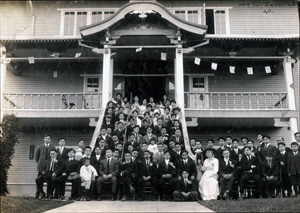 |
The Los Angeles Higashi Honganji Buddhist Temple has served the Buddhist community since the turn of the 20th Century. In 1904, Rev. Junjyo Izumida established the first Japanese Buddhist temple in Los Angeles, located at 229 1/2 East Fourth Street. The temple was relocated several times, to San Julian Street in Little Tokyo (1907), to Savannah Street (1911), and, in 1926, the temple was moved to 118 North Mott Street in the Boyle Heights area of East Los Angeles, where it remained for the next fifty years. The present temple, built in 1976, marked the return of the Higashi Honganji to its roots in Little Tokyo. The temple observed its Centennial Celebration, celebrating 100 years of buddhism in Los Angeles, on October 23-25, 2004. For a more detailed history of the temple’s 100 years in Los Angeles, please refer to Centennial History. |
|
Early 1920’s photo of the temple on Savannah St. |
|
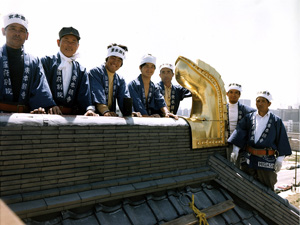 |
|
|
1976 Installation of the rooftop time capsule by construction workers from Japan. |
Community Service
Though the primary function of the temple has been to fulfill the religious needs of the community, the temple has also served as a center for a variety of other activities as well. It was, for instance, the home of the first judo-kendo dojo in Los Angeles, in addition to having served as an orphanage, a Japanese language school, and as a facility for a variety of cultural classes. Today, the Higashi Honganji houses the Lumbini Child Development Center, a licensed pre-school and fully accredited kindergarten with a full capacity of 74 children in its care.
Centennial Celebration (1904-2004)
Celebrating 100 Years of Buddhism in Los Angeles Walking the Path of the Nembutsu By celebrating 100 years of Buddhism in Los Angeles, Higashi Honganji Buddhist Temple shares its great joy in recognizing its 100th anniversary, for it was this Jodo Shinshu Sangha, a Buddhist community going back to the 12th century Japanese teacher Shinran Shonin, that first introduced Buddhism to the region. All who walk the path of the Nembutsu, by saying “Namu Amida Butsu”, can enter the Pure Land and find the light and life of the Amida Buddha. This simple teaching is offered to all people through Sunday services and a host of other community activities. The Temple’s history begins with one dedicated Japanese priest who, with the Buddha, the Dharma (teachings), and the Sangha, served all those who chose this path. Along the way challenges were faced; the Sangha grew and changed; and today, it looks to the next 100 years on the path and prepares for a bright future.
Architecture
Built in 1976, the temple’s architecture includes a traditional roof with over 30,000 tiles imported from Japan, lanterns which adorn the ceiling of the main chapel, and a magnificent statue of Amida Buddha on the altar. temple reveals itself as a magnificent repository of Buddhist art and architecture. The beautiful Japanese garden was landscaped and continues to be maintained by temple members.


